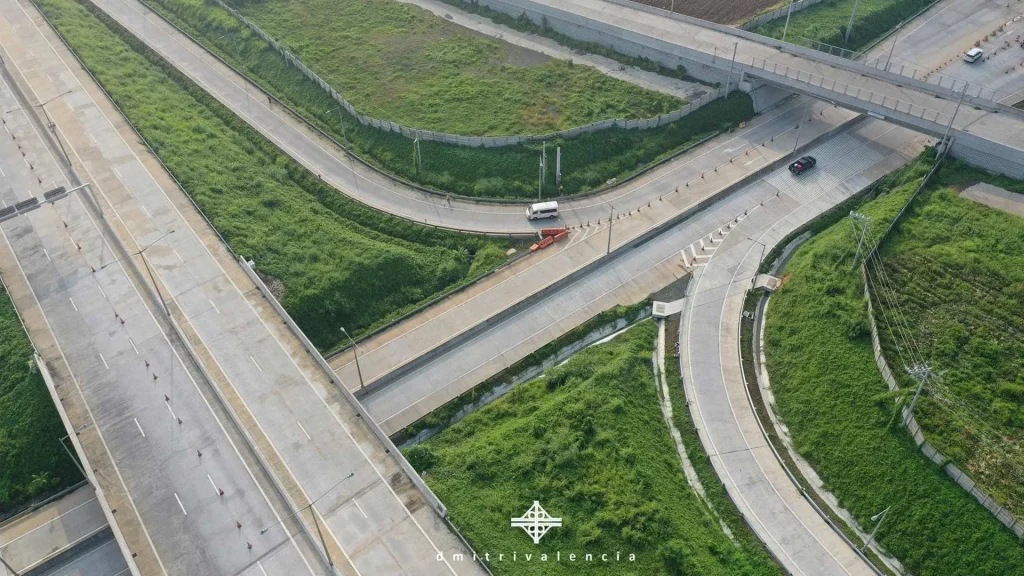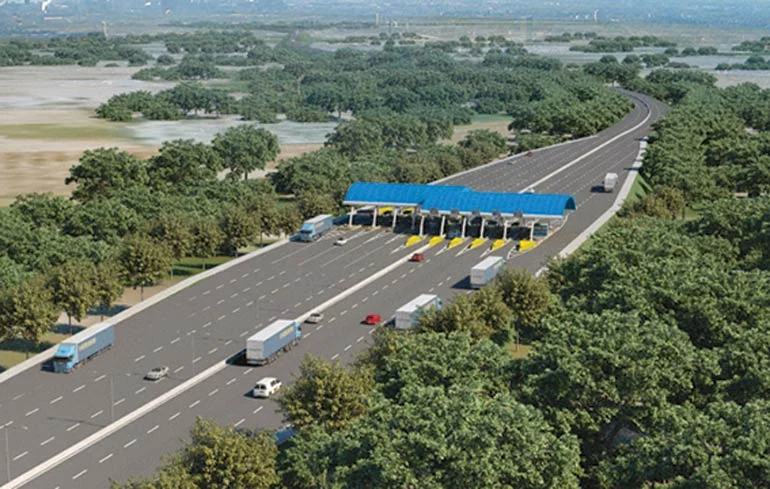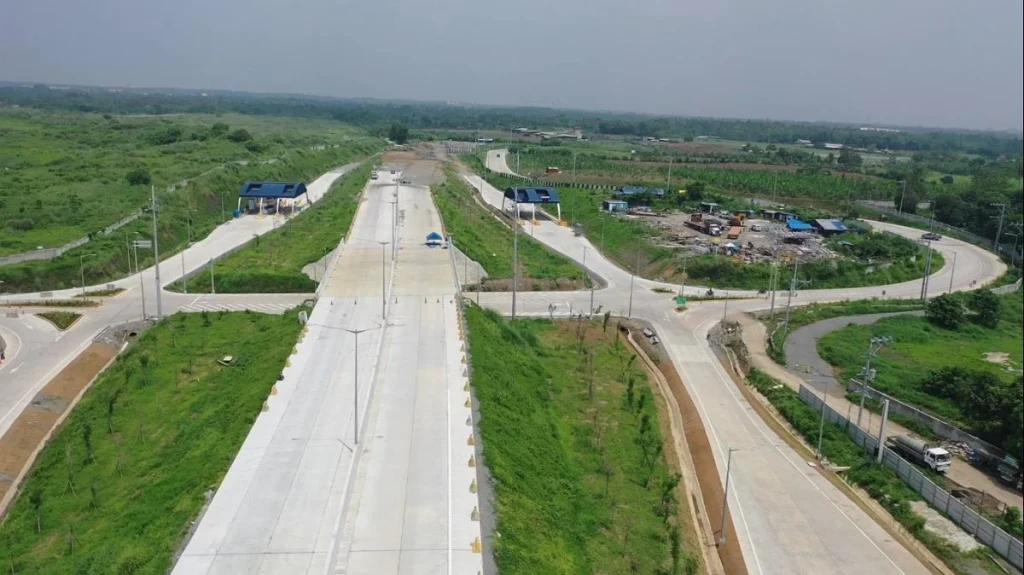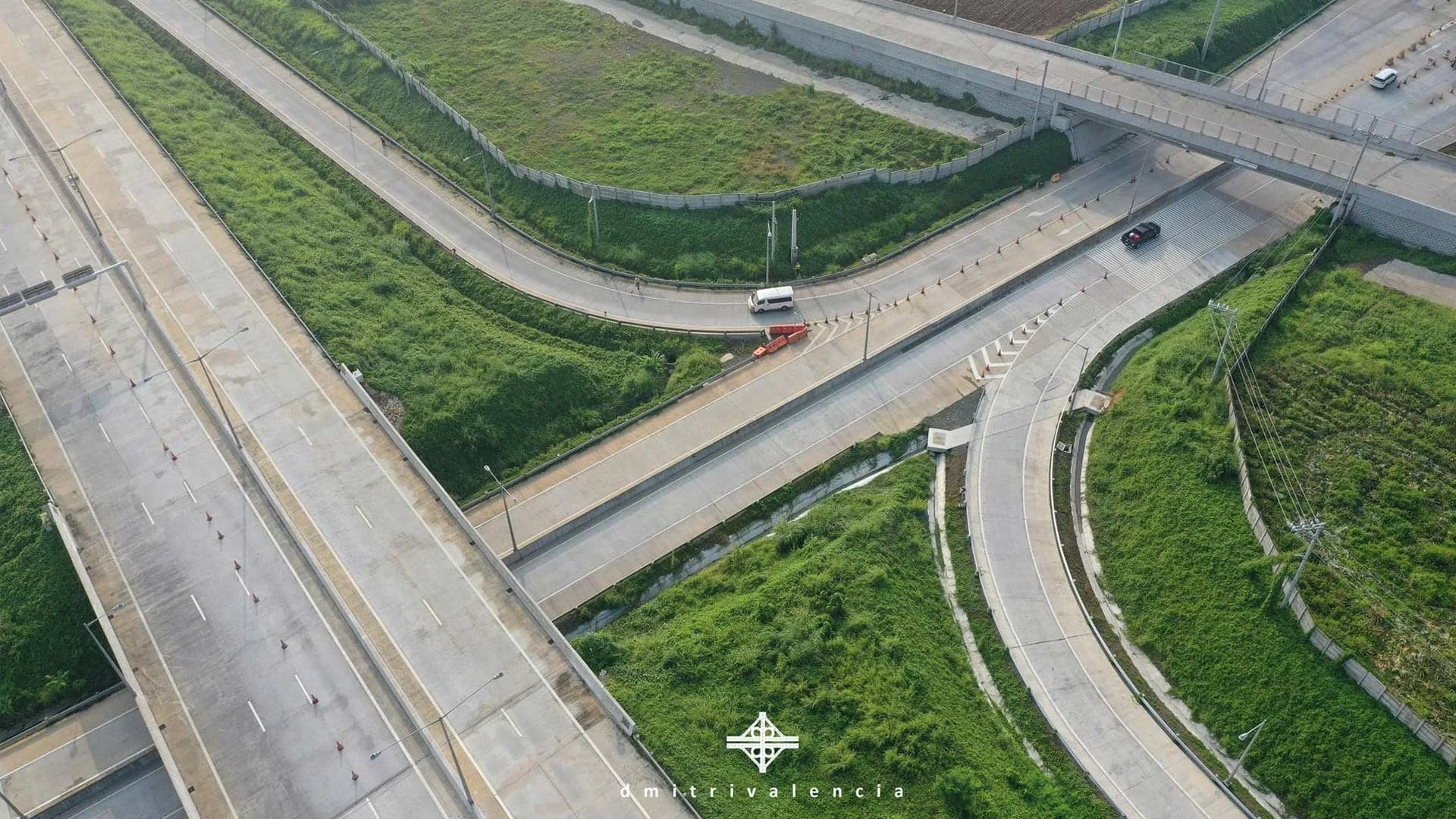photo from: topgear.com.ph
Tagaytay is known for its tourist destinations, from parks, delicious restaurants that offer a view of the Taal Lake, hotels, and Danish-inspired Tagaytay condo that offers relaxation. The drive to Tagaytay would at least take an hour to get, but with the coming Silang Interchange, it won’t be long until your drive to the Second Summer Capital in the Philippines won’t take long. The Silang Interchange is a symbol of development and connectedness as the landscape of infrastructure changes constantly. The Silang Interchange, which is expected to open in September, will undoubtedly have a big impact on the region’s transportation, business, and general development.
The Silang Aguinaldo Interchange

photo from: topgear.com.ph
At the junction of two important roads—the Aguinaldo Highway and the Santa Rosa-Tagaytay Road—is where the Silang Interchange is strategically situated. The busy Cavite-Laguna-Batangas-Rizal-Quezon (CALABARZON) region, noted for its economic vitality and tourist attractions, will benefit from the streamlined traffic flow of this junction in particular.
One of the main goals of the Silang Interchange is to reduce traffic on the Santa Rosa-Tagaytay Road and the Aguinaldo Highway. Travel times will be shortened, bottlenecks will be reduced, and driving will be more enjoyable with enhanced connection and better traffic flow. The interchange is built to handle the increasing volume of traffic using these roads, making travel for both locals and visitors easier. Local economies frequently benefit from infrastructure initiatives like the Silang Interchange. This interchange’s greater accessibility may entice firms to locate nearby, resulting in the creation of jobs and a boost in the local economy. Additionally, the ease of moving products and services around can promote trade and business, which is advantageous to both small businesses in the area and larger organizations.
The Silang Interchange’s proximity to well-liked tourist attractions, including those in Silang and Tagaytay, would likely boost tourism in the region. The ease of exploring these locations without the inconvenience of road congestion will appeal to travelers. A rise in local tourism may result from this improved accessibility, boosting the area’s total income and reputation as a popular tourist destination.
A more cooperative and constructive environment can be promoted by incorporating the community in the planning process and keeping them updated on the project’s advantages, difficulties, and advancement. Getting the community involved and aware is essential to the success of infrastructure projects. It is crucial to address local residents’ concerns and make sure their voices are heard because building operations frequently have an impact on them.
A crucial turning point in the growth of the CALABARZON area will be marked with the opening of the Silang Interchange in September. The interchange promises to change the landscape for the better as a hub of expanded tourism, increased economic opportunity, and improved connectivity. The Silang Interchange is a prime example of the benefits of well-executed infrastructure projects since it has the ability to reduce traffic congestion, boost regional economies, and ease travel. It is obvious that this interchange is more than just a road; it represents a path for advancement as we eagerly await its opening.
What is Cavite Laguna Expressway (CALAX)?

photo from: mptc.com.ph/index.php
The Philippines’ largest toll road, the Cavite-Laguna road, or CALAX, links the provinces of Cavite and Laguna. It is essential to enhance communication and transportation on Luzon, the biggest and most populous island in the nation.
CALAX’s primary goals are to reduce traffic jams, enhance connectivity, and foster economic development in the CALABARZON region (Cavite, Laguna, Batangas, Rizal, and Quezon). An effective transportation system is crucial in this area because of the industrial zones, residential areas, and tourist attractions that are found here. It is intended to considerably shorten commuter and driving distances between Cavite and Laguna. Compared to the older, busier local roads, it provides a quicker and more convenient path. Both daily commuters and long-distance travelers gain from this.
CALAX not only shortens travel times but also increases driving security. The expressway is a safer choice for drivers thanks to its modern infrastructure and safety features, which include well-maintained road surfaces, lighting, and security systems. It is possible that CALAX will boost economic growth in both Laguna and Cavite. It attracts firms to establish up shop in the area by facilitating the movement of products and people, which results in the creation of jobs and greater economic activity. The Cavite-Laguna Expressway (CALAX) is an essential component of the country’s transportation network, acting as a driver of economic development, cutting down on travel time, and enhancing connectivity between the provinces of Cavite and Laguna.
Subic Clark Tarlac Expressway (SCTEX)
Subic-Clark-Tarlac Expressway, or SCTEX, is a significant toll road in the Philippines. It links Tarlac City in Tarlac, the Clark Freeport Zone in Pampanga, and the Subic Bay Freeport Zone in Zambales. SCTEX is a vital component of the nation’s transportation network since it offers drivers heading between these important economic hubs and other areas of Luzon Island a quicker and more effective route.
The highway greatly shortens travel times and eases traffic on other routes, boosting the local economy and improving the flow of people and commodities. It is a crucial part of the Philippine highway system, and it is run by the same organization that runs the North Luzon Expressway (NLEX), the NLEX Corporation.
What is the purpose of SCTEX?
- Through its connections to important economic zones like the Subic Bay Freeport Zone and the Clark Freeport Zone, SCTEX significantly contributes to the region’s economic development. The expressway makes it easier to transport people and commodities, luring investments and generating jobs. These zones are home to a variety of enterprises, businesses, and manufacturing facilities.
- Compared to other routes, SCTEX offers a faster and more effective transportation route. It makes it simpler for drivers to navigate between major cities and economic zones on Luzon Island by reducing travel times and relieving congestion on current road networks.
- By enhancing connectivity between Luzon’s various areas, the expressway facilitates the movement of people and products from northern regions to central Luzon and vice versa. Trade, tourism, and commerce all benefit from this improved connectedness.
- SCTEX helps the territories it serves to develop and integrate as a whole. As a result of connecting various provinces, cities, and economic zones, local governments and stakeholders are encouraged to cooperate.
CALAX Silang Interchange

photo from: gmanetwork.com
The Philippines’ largest toll road, the Cavite-Laguna road, or CALAX, links the provinces of Cavite and Laguna. It is essential to enhance communication and transportation on Luzon, the biggest and most populous island in the nation.
CALAX’s primary goals are to reduce traffic jams, enhance connectivity, and foster economic development in the CALABARZON region (Cavite, Laguna, Batangas, Rizal, and Quezon). An effective transportation system is crucial in this area because of the industrial zones, residential areas, and tourist attractions that are found here. The Manila-Cavite Expressway (CAVITEX) in Kawit, Cavite, connects with the South Luzon Expressway (SLEX) in Mamplasan, Binan, Laguna, along a length of about 45 kilometers (28 miles). It passes through a number of towns and cities in both Laguna and Cavite, including Bacoor, Imus, Dasmarinas, and Santa Rosa.
CALAX is intended to dramatically shorten commuter and driving distances between Cavite and Laguna. Compared to the older, busier local roads, it provides a quicker and more convenient path. Both daily commuters and long-distance travelers gain from this. CALAX not only shortens travel times but also increases driving security. The expressway is a safer choice for drivers thanks to its modern infrastructure and safety features, which include well-maintained road surfaces, lighting, and security systems.
It is possible that CALAX will boost economic growth in both Laguna and Cavite. It attracts firms to establish up shop in the area by facilitating the movement of products and people, which results in the creation of jobs and greater economic activity. A crucial component of the Philippines’ transportation system, the Cavite-Laguna Expressway (CALAX) speeds up travel times, promotes economic growth, and enhances connectivity between the provinces of Cavite and Laguna.
How to get around Tagaytay with Silang Interchange?
There are numerous ways to get to Tagaytay via the Silang Interchange to reach the main sights and locations in this lovely part of the Philippines.
- Diving your private vehicle is the most popular means to travel from the Silang Interchange to Tagaytay City Center.
- Consult the locals for advice and suggestions since they may know of the greatest routes and undiscovered attractions in Tagaytay. Consult the locals for advice and suggestions since they may know of the greatest routes and undiscovered attractions in Tagaytay.
Environmental Impacts of Silang Interchange
Infrastructure projects like the Silang Interchange can have both favorable and unfavorable environmental effects during their construction and operation. Infrastructure projects like the Silang Interchange may provide environmental difficulties, but when planned and carried out carefully, they can also have a positive environmental impact.

Positive Impacts
- Improved Traffic Flow: The Silang Interchange can aid in reducing vehicle idling times by easing congestion and enhancing the effectiveness of traffic movement. As a result, there may be a decrease in fuel use as well as greenhouse gas and air pollution emissions, which will help to enhance the quality of the air.
- Reduced Carbon Footprint: By reducing travel times and distances, well-designed interchanges can help commuters use less fuel and leave a smaller carbon footprint. This may support local initiatives to combat climate change.
- The creation of public transportation choices like bus rapid transit (BRT) or park-and-ride facilities is frequently made possible by infrastructure developments. Promoting the use of public transit can help keep fewer private cars on the road, which is better for the environment.
- Economic Development and Green Jobs: The Silang Interchange can draw in firms and foster regional economic development. This can result in the production of green jobs in industries like renewable energy, environmentally friendly buildings, and environmental preservation when it is planned with sustainability in mind.
- Sustainable land use planning may be able to take advantage of the development surrounding the interchange. The effective use of resources may be promoted, natural areas can be protected, and sprawl can be avoided with proper zoning and land management.
It is crucial that the Silang Interchange project undergo extensive environmental studies, abide by environmental laws, and include sustainable practices in its design and construction in order to optimize these favorable environmental effects. To guarantee that the project is environmentally responsible and advantageous to the region’s ecology, cooperation between governmental entities, environmental organizations, and local populations is essential.
It is crucial that the Silang Interchange project undertake extensive environmental impact studies and abide by environmental laws and best practices in order to reduce these negative effects on the environment. Reforestation, wildlife conservation, eco-friendly building techniques, and the promotion of eco-friendly transportation options are some actions that can be taken to reduce negative consequences and advance environmental sustainability.
Related Blog: Roads you Can Take Going to Tagaytay from Manila


